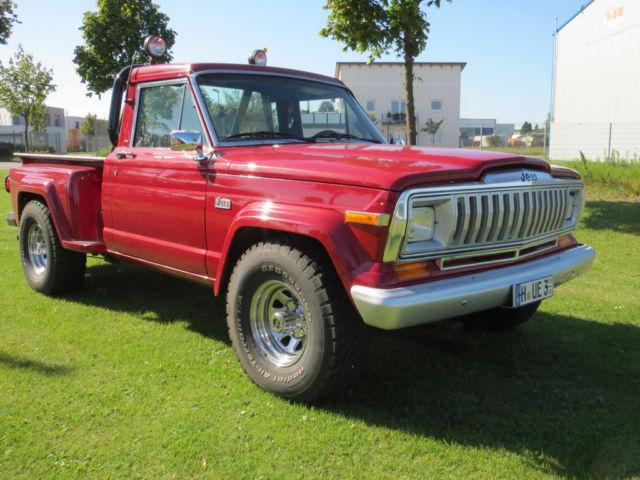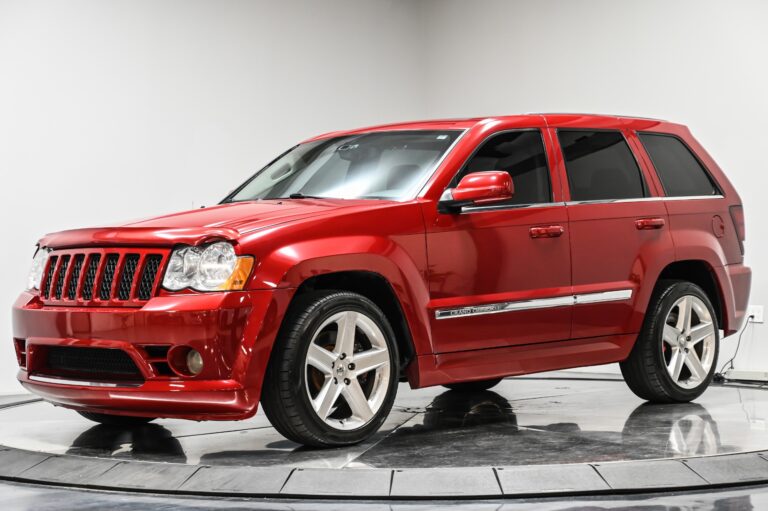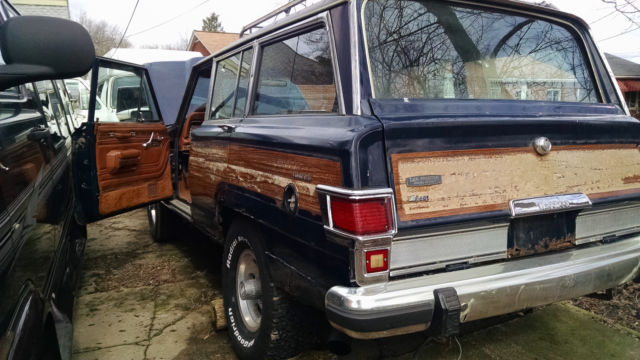USPS Jeep For Sale: Your Comprehensive Guide to Owning a Piece of Postal History
USPS Jeep For Sale: Your Comprehensive Guide to Owning a Piece of Postal History jeeps.truckstrend.com
Introduction: The Iconic Right-Hand Drive Workhorse
The image of a bright white, right-hand drive (RHD) Jeep navigating suburban streets has long been synonymous with mail delivery in America. These vehicles, primarily the Jeep DJ-5 series, were the backbone of the United States Postal Service (USPS) fleet for decades, delivering countless letters and packages. While the iconic Grumman LLV (Long Life Vehicle) largely replaced them, a significant number of these rugged, purpose-built Jeeps have retired from service and found their way onto the private market.
USPS Jeep For Sale: Your Comprehensive Guide to Owning a Piece of Postal History
For sale, these USPS Jeeps represent more than just a used vehicle; they are a unique blend of American automotive history, quirky practicality, and a canvas for customization. Whether you’re a classic car enthusiast, a collector of unique vehicles, an individual seeking a novel daily driver, or someone in need of a specialized RHD vehicle for a specific purpose (like a paper route or farm use), understanding what’s involved in acquiring and maintaining a retired USPS Jeep is crucial. This comprehensive guide will delve into everything you need to know about the USPS Jeep for sale market, from their storied past to practical buying advice and ownership insights.
I. The Legacy of the DJ-5: A Brief History of the USPS Jeep
The story of the USPS Jeep begins with the Dispatcher Jeep (DJ), a two-wheel-drive variant of the legendary CJ-5. Designed for light-duty commercial use, the DJ series was a natural fit for the postal service’s demanding stop-and-go routes. The first DJs were introduced in the late 1950s by Willys-Overland, followed by Kaiser-Jeep, and later by American Motors Corporation (AMC) and its subsidiary AM General.
The DJ-5 model, specifically, became the most recognizable postal vehicle. Produced from the late 1960s through the early 1980s, these Jeeps evolved through several iterations (DJ-5A, B, C, D, E, F, G), each often featuring different engines, transmissions, and minor body changes. Early models might have featured four-cylinder "Hurricane" engines or even Buick V6s, while later versions commonly used AMC’s inline-four (like the 151 cubic inch "Iron Duke" or the AMC 150/2.5L) or AMC inline-six engines.
Their selection by the USPS was no accident. The DJ-5 offered:
- Durability: Built on a robust Jeep chassis, they could withstand constant use.
- Maneuverability: Their compact size was ideal for navigating residential streets.
- Right-Hand Drive: This was a critical feature, allowing mail carriers to efficiently deliver to curbside mailboxes without needing to exit the vehicle or slide across the seat.
- Enclosed Body: Unlike open-top CJs, the DJ-5 provided shelter for mail and carrier.

While they were utilitarian workhorses, their unique RHD configuration and association with the postal service cemented their iconic status, making them instantly recognizable and, for many, a nostalgic piece of Americana.
II. Why Buy a Retired USPS Jeep? Unique Benefits and Appeal
Owning a retired USPS Jeep offers a blend of novelty, practicality, and historical significance that appeals to a diverse range of buyers.
- Right-Hand Drive (RHD) Novelty & Utility: This is undoubtedly their most distinguishing feature. For some, it’s simply a unique conversation starter and a fun driving experience. For others, it’s a practical necessity for jobs like newspaper delivery, landscaping, or rural farm work where curbside access or specific vehicle positioning is advantageous. They also make excellent parade vehicles!
- Durability & Simplicity: These Jeeps were built for a life of hard work. Their mechanical components are generally robust and straightforward, making them relatively easy to maintain and repair for those with basic mechanical knowledge. They predate complex electronics, meaning fewer sophisticated systems to fail.
- Affordability: Compared to other classic Jeeps or unique RHD vehicles, retired USPS Jeeps are often quite affordable to purchase, making them an accessible entry point into classic vehicle ownership or RHD driving.
- Collector’s Item & Historical Significance: Each DJ-5 carries a tangible piece of American postal history. For collectors, it’s a chance to own a vehicle that served a vital public function for decades.
- Customization Potential: While originally utilitarian, their simple design makes them excellent platforms for customization. Owners frequently modify them for light off-road use (despite being 2WD), turn them into unique advertising vehicles, or restore them to show-quality condition.
- Unique Driving Experience: Driving RHD is a different sensation that can be both challenging and exhilarating, offering a fresh perspective on the road.
III. What to Look For: Key Considerations Before Purchase
Acquiring a retired USPS Jeep requires careful inspection, as these vehicles have lived a hard life. Here’s what to prioritize:
- Rust: The Number One Enemy: These vehicles were exposed to all weather conditions, often left outside, and rarely garaged. Check thoroughly for rust in:
- Frame: Especially around body mounts, spring hangers, and crossmembers.
- Floorboards: Both driver and passenger sides, particularly under the pedals and seats.
- Body Panels: Rocker panels, wheel wells, door bottoms, and the rear cargo area. Extensive rust can make restoration costly or impractical.
- Mechanical Condition:
- Engine: Listen for strange noises, check for oil leaks, excessive smoke from the exhaust, and overall power. Many will have high mileage.
- Transmission: Test all gears, check for smooth shifting (manual or automatic), and look for leaks.
- Brakes: Ensure they feel firm and stop the vehicle effectively. Inspect lines, calipers/wheel cylinders, and master cylinder.
- Steering & Suspension: Check for excessive play in the steering wheel, worn ball joints, tie rods, and leaf springs.
- Electrical System: Often neglected, check all lights (headlights, brake lights, turn signals), gauges, wipers, and heater fan (if equipped). Look for frayed or aftermarket wiring.
- Tires: Inspect tire condition, tread depth, and age. Dry rot is common.
- Documentation & Ensure the vehicle has a clear, transferable title. Some surplus vehicles might have unique titling procedures depending on your state. Verify the VIN matches the title and the vehicle.
- Originality vs. Modifications: Decide if you want a historically accurate vehicle or one that has been modified (e.g., engine swaps for more power or reliability). Many have had their original engines replaced over the years.
- Specific DJ-5 Model: Research the specific year and model (DJ-5A, B, C, D, E, F, G) to understand its original engine and transmission. Later models (D, E, F, G) with the AMC 151 "Iron Duke" or AMC 150/2.5L engines are often preferred for their better parts availability and efficiency.
IV. Where to Find Them: A Guide to Sourcing USPS Jeeps
Finding a USPS Jeep for sale often involves looking beyond traditional car dealerships.
- Government Surplus Auctions (GSA Auctions): Historically, GSA was the primary source. While the active fleet of DJ-5s has long been retired, occasionally private sellers who bought from GSA will resell. Always check GSA’s website for other government agency surplus.
- Online Marketplaces:
- eBay Motors: Often has a selection of DJ-5s from various sellers across the country.
- Facebook Marketplace & Groups: Search "USPS Jeep," "DJ-5," or "Right Hand Drive Jeep." There are dedicated groups for RHD vehicle enthusiasts and postal vehicle owners.
- Craigslist: Local listings can be a good source for finding vehicles within driving distance.
- Specialized Forums & Clubs: Jeep forums (especially those focused on vintage or utility Jeeps) and classic vehicle clubs can be excellent resources. Members often sell or know of vehicles for sale.
- Classic Car Dealers/Specialists: Less common, but some dealers specializing in unique or vintage utility vehicles might occasionally have a DJ-5.
- Word of Mouth/Local Ads: Keep an eye out in rural areas, as these vehicles were often repurposed for farm use after their postal careers.
V. Restoration, Customization, and Maintenance: Getting Your DJ-5 Roadworthy
Once you’ve acquired your USPS Jeep, the real fun (and work) begins.
- Initial Assessment & Prioritization: Before anything else, focus on safety. Inspect and repair brakes, steering components, tires, and lights. Ensure the vehicle is roadworthy and safe to drive.
- Common Repairs:
- Rust Repair: This is often the most time-consuming and costly repair. Depending on severity, it might involve patching, panel replacement, or professional bodywork.
- Electrical Overhaul: Many old wires will be brittle or corroded. A new wiring harness or careful re-wiring can prevent future headaches.
- Engine Tune-up & Fluid Changes: Basic maintenance like spark plugs, filters, oil, transmission fluid, and differential fluid changes can make a big difference.
- Suspension & Steering Components: Replacing worn bushings, shocks, tie rods, and ball joints will improve ride quality and handling.
- Parts Availability: Mechanical parts (engines, transmissions, axles) for common DJ-5 powertrains (like the AMC 151 or GM Iron Duke) are generally available from aftermarket suppliers or junkyards. Body panels and interior-specific parts can be harder to find, often requiring fabrication or sourcing from donor vehicles.
- Engine Swaps: A very popular modification. Owners often swap in more modern, powerful, and fuel-efficient engines (e.g., GM 4.3L V6, various inline-fours or small V8s) to make the DJ-5 more suitable for modern traffic conditions.
- Customization Ideas:
- Exterior: New paint job (often reverting to the original white, or a custom color), wheel upgrades, minor lift kits (for a more aggressive stance, though 2WD limits off-road capability).
- Interior: Seat reupholstery, dashboard repair, addition of modern comforts like a better stereo, improved insulation, or even aftermarket AC/heating (many lacked effective climate control).
- Utility: Converting the cargo area for specific uses, adding toolboxes, or creating a unique mobile advertising platform.
- Insurance & Registration: Registering an RHD vehicle is generally straightforward in most states, but always check your local DMV requirements. Inform your insurance provider that it’s RHD, as some might have specific policies or require a special note. Classic car insurance might be an option for restored vehicles.
VI. Challenges and Solutions
While owning a USPS Jeep is rewarding, there are common challenges:
- Lack of Modern Comforts: Many DJ-5s had minimal amenities, often lacking air conditioning, robust heating, or even a functional radio.
- Solution: Aftermarket AC/heating units can be installed. Simple fans, better insulation, and a modern head unit can significantly improve comfort.
- Slow Speed/Highway Performance: Designed for city routes, they are not highway cruisers. Top speeds are often limited, and they can feel underpowered in modern traffic.
- Solution: An engine swap is the most common solution for improved performance. Otherwise, adjust your driving expectations and stick to secondary roads.
- Parts for Body/Interior: As noted, specific body panels, interior trim, and glass can be hard to find.
- Solution: Join online communities and forums for sourcing parts. Be prepared for fabrication work or creatively adapting parts from other vehicles.
- Rust Recurrence: Even after repair, rust can be a persistent issue if not properly addressed and prevented.
- Solution: Thorough rust treatment, proper priming and painting, and regular undercarriage cleaning and rust-proofing are essential for long-term preservation.
- Insurance for RHD: Some insurers might initially be hesitant or require specific information for RHD vehicles.
- Solution: Be upfront about the RHD nature of the vehicle. Shop around for quotes, and consider classic car insurance providers if it’s a restored vehicle.
USPS Jeep For Sale: Estimated Price Guide
The price of a retired USPS Jeep (DJ-5 series) can vary significantly based on its condition, originality, and location. This table provides a general estimate.
| Condition Category | Description | Estimated Price Range (USD) | Key Factors Influencing Price |
|---|---|---|---|
| Poor/Parts Car | Heavily rusted, non-running, significant mechanical issues, missing parts, salvage title. | $500 – $1,500 | Extent of rust, completeness, title status, presence of major components (engine, transmission). |
| Fair/Project | Runs and drives but needs substantial mechanical work, significant rust repair, or full restoration. | $1,500 – $3,500 | Drivability, severity of rust, major mechanical issues (e.g., bad engine/transmission), completeness, title status. |
| Good/Driver | Runs well, minimal to moderate rust, roadworthy with minor issues, decent interior/exterior. | $3,500 – $7,000 | Engine/transmission health, minimal structural rust, functional electrical, tires, brakes, general cosmetic appeal, clear title. |
| Excellent/Restored | Fully restored to original or custom specifications, minimal to no rust, excellent mechanical condition, show-quality paint and interior. | $7,000 – $15,000+ | Quality of restoration (paint, bodywork, mechanicals), originality vs. high-quality custom modifications (e.g., engine swap), rarity of specific model. |
Note: Prices are estimates and can fluctuate based on market demand, location, specific DJ-5 model (e.g., later models with more desirable engines might fetch higher prices), and whether it’s an private sale or a dealer listing.
Frequently Asked Questions (FAQ) about USPS Jeeps for Sale
Q1: Are all USPS Jeeps right-hand drive (RHD)?
A1: Yes, the vast majority of DJ-5 series Jeeps used by the USPS were manufactured with right-hand drive for efficient curbside mail delivery. While some older, general-purpose Jeeps might have been used by the Post Office in various capacities, the iconic white, enclosed "mail Jeeps" are RHD.
Q2: Are USPS Jeeps safe for daily driving?
A2: While they can be registered and driven daily, they lack modern safety features (airbags, crumple zones, ABS, traction control). Their compact size and often limited highway speed capabilities mean they are not ideal for high-speed freeway driving. They are best suited for urban, suburban, or rural low-speed use.
Q3: What’s the fuel economy like for a USPS Jeep?
A3: Fuel economy varies depending on the engine. Earlier, less efficient engines might get 15-20 MPG, while later models with the AMC 151 "Iron Duke" or 2.5L engine could achieve 20-25 MPG, especially if well-maintained and driven gently. Engine swaps can significantly alter fuel economy.
Q4: Can I easily get parts for a USPS Jeep?
A4: Mechanical parts for the engine, transmission, and axles are generally available, especially for common GM or AMC powertrains used in later DJ-5 models, as these parts were shared with other vehicles. However, body panels, specific interior components, and trim pieces unique to the DJ-5 can be challenging to find and may require fabrication or sourcing from donor vehicles.
Q5: Is it difficult to register an RHD vehicle in the US?
A5: Generally, no. Most states allow the registration of RHD vehicles as long as they meet standard safety and emissions requirements for their age. You will need a clear title. It’s always wise to check with your local Department of Motor Vehicles (DMV) for any specific state-level requirements. Informing your insurance company about the RHD configuration is also important.
Q6: What’s the best year/model of DJ-5 to look for?
A6: This depends on preference. Later models (DJ-5D, E, F, G, typically 1974-1984) often came with more reliable and parts-friendly engines like the AMC 151 (GM Iron Duke) or AMC 2.5L four-cylinders. Earlier models (DJ-5A, B, C) might have unique engines that are harder to source parts for. Consider the condition over the specific year.
Q7: Can a USPS Jeep go off-road?
A7: The DJ-5 is a two-wheel-drive (2WD) vehicle, unlike its 4×4 CJ counterparts. While its Jeep heritage gives it decent ground clearance, it’s not designed for serious off-roading. It can handle light trails, dirt roads, and uneven terrain suitable for farm work or property maintenance, but don’t expect it to conquer rocky trails.
Conclusion: Driving a Piece of Americana
The USPS Jeep, specifically the DJ-5 series, is more than just a quirky vehicle; it’s a tangible piece of American history that served a vital role in connecting communities for decades. For sale today, these retired workhorses offer a unique blend of nostalgia, practical utility, and classic automotive appeal.
Owning a USPS Jeep is an experience. It’s about embracing its quirks, appreciating its robust simplicity, and perhaps embarking on a rewarding restoration or customization project. While they present challenges typical of vintage vehicles – primarily rust and the need for mechanical attention – the rewards of driving a distinct, right-hand-drive piece of Americana often far outweigh the effort. Whether you’re seeking a conversation starter, a specialized utility vehicle, or simply a unique classic to cherish, the USPS Jeep offers an opportunity to own a truly one-of-a-kind vehicle that carries the legacy of the open road and the daily mail.




